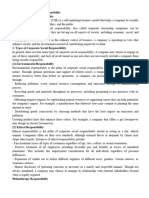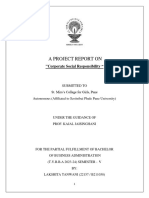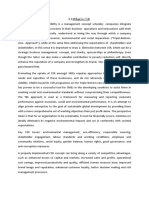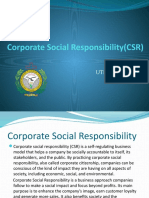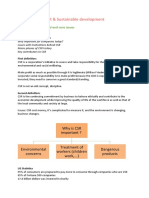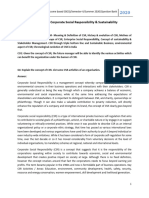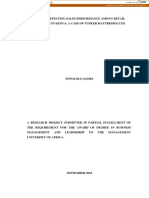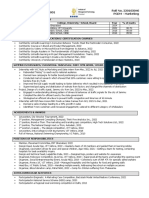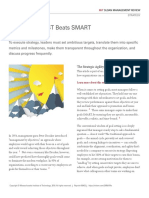0% found this document useful (0 votes)
135 views22 pagesThe Three Pillars of CSR
The document discusses the three pillars of corporate social responsibility (CSR): economic, social, and environmental. It provides details on each pillar and how companies can address them through their strategies, policies, and actions. The economic pillar focuses on business sustainability and resilience. The social pillar involves complying with employment laws, employee well-being, and community impact. The environmental pillar covers reducing negative environmental impacts and adopting sustainable practices. Stakeholders are also important to CSR strategies, and the document discusses identifying and engaging with both internal and external stakeholders.
Uploaded by
Dianne GloriaCopyright
© © All Rights Reserved
We take content rights seriously. If you suspect this is your content, claim it here.
Available Formats
Download as PDF, TXT or read online on Scribd
0% found this document useful (0 votes)
135 views22 pagesThe Three Pillars of CSR
The document discusses the three pillars of corporate social responsibility (CSR): economic, social, and environmental. It provides details on each pillar and how companies can address them through their strategies, policies, and actions. The economic pillar focuses on business sustainability and resilience. The social pillar involves complying with employment laws, employee well-being, and community impact. The environmental pillar covers reducing negative environmental impacts and adopting sustainable practices. Stakeholders are also important to CSR strategies, and the document discusses identifying and engaging with both internal and external stakeholders.
Uploaded by
Dianne GloriaCopyright
© © All Rights Reserved
We take content rights seriously. If you suspect this is your content, claim it here.
Available Formats
Download as PDF, TXT or read online on Scribd
/ 22



